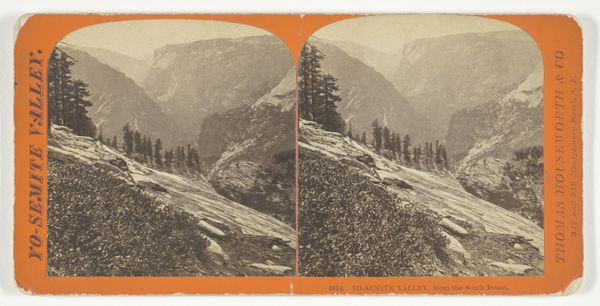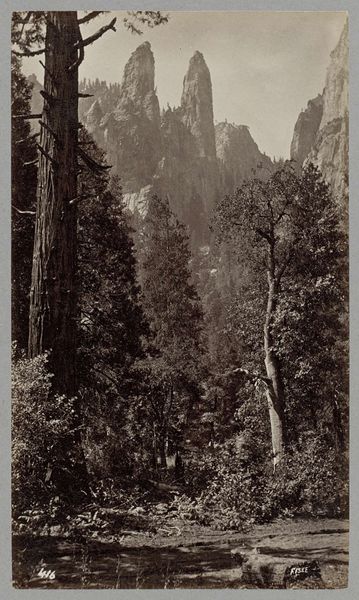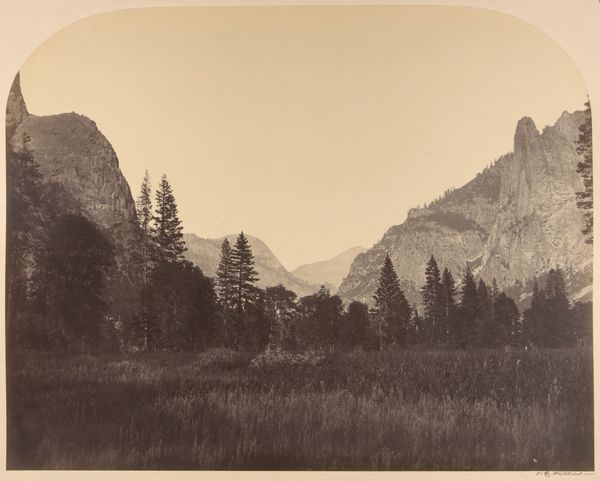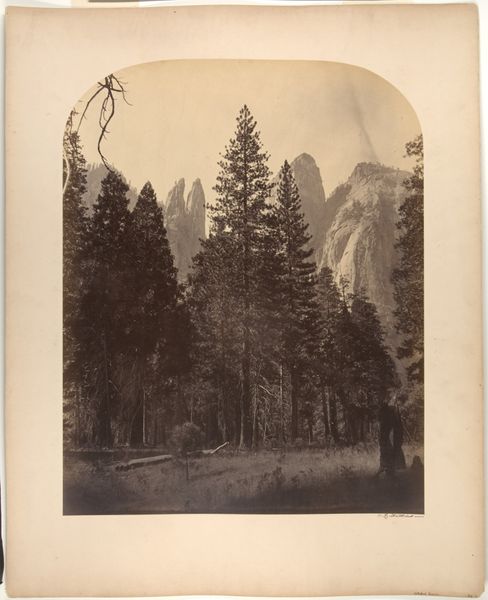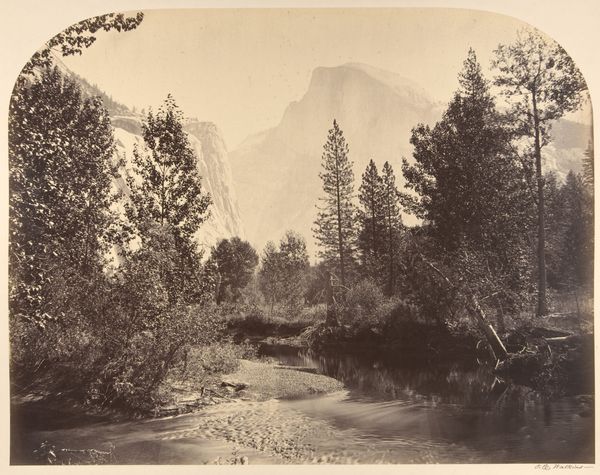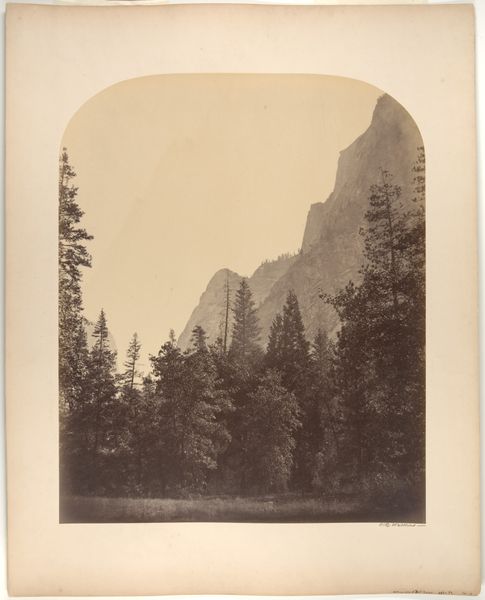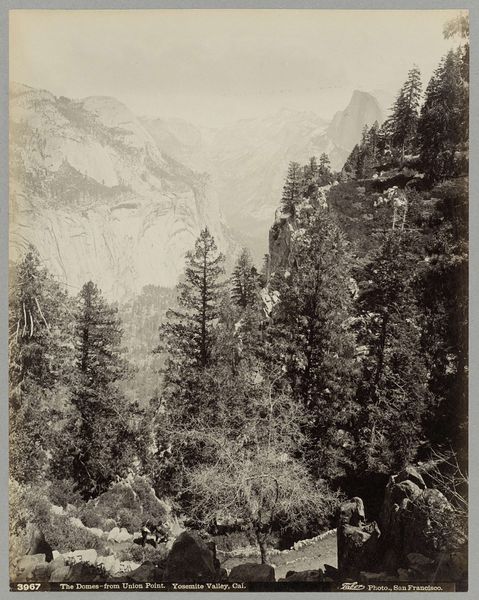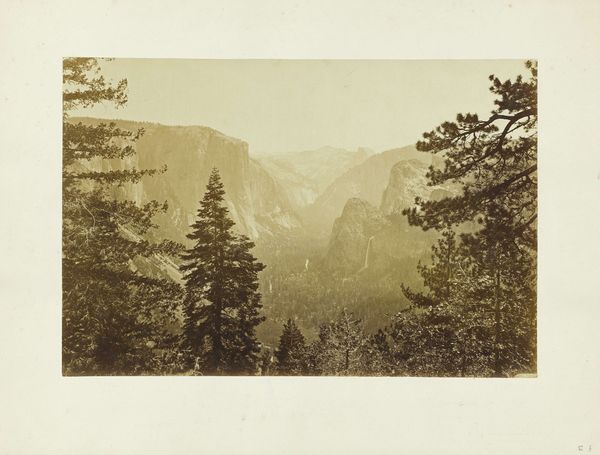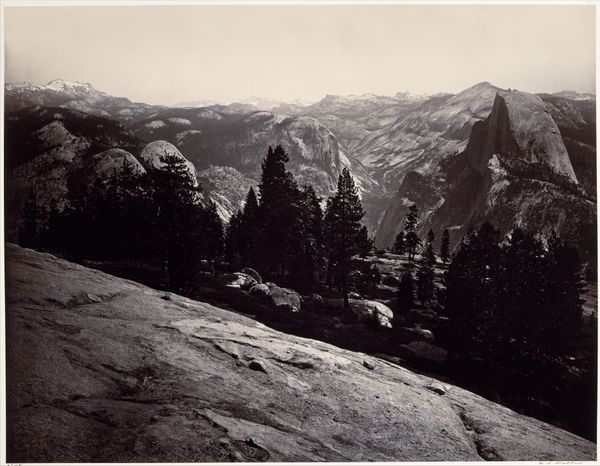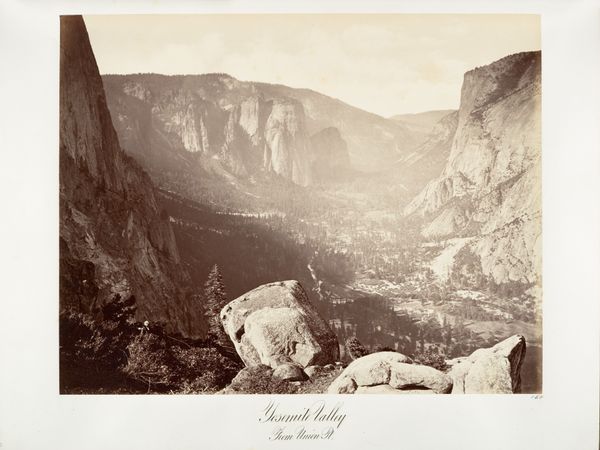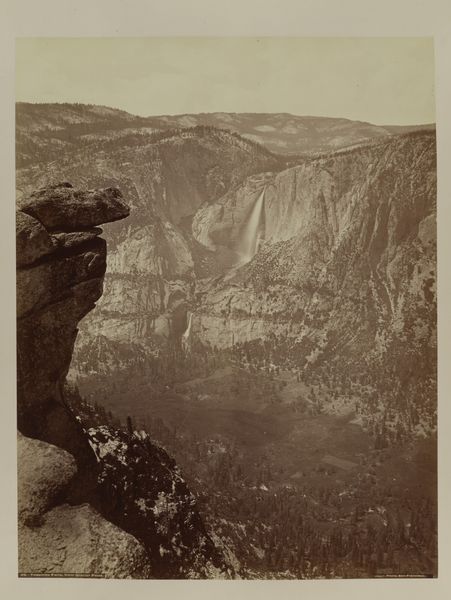![[Group of 23 Stereograph Views of Yosemite Valley Housed in Original Publisher's Box] by Underwood & Underwood](/_next/image?url=https%3A%2F%2Fd2w8kbdekdi1gv.cloudfront.net%2FeyJidWNrZXQiOiAiYXJ0ZXJhLWltYWdlcy1idWNrZXQiLCAia2V5IjogImFydHdvcmtzLzUzOTYzODIwLTZhNGQtNDJjMC05MWEyLWIwNzJlMGZhN2M5Ni81Mzk2MzgyMC02YTRkLTQyYzAtOTFhMi1iMDcyZTBmYTdjOTZfZnVsbC5qcGciLCAiZWRpdHMiOiB7InJlc2l6ZSI6IHsid2lkdGgiOiAxOTIwLCAiaGVpZ2h0IjogMTkyMCwgImZpdCI6ICJpbnNpZGUifX19&w=3840&q=75)
[Group of 23 Stereograph Views of Yosemite Valley Housed in Original Publisher's Box] 1897 - 1907
0:00
0:00
print, photography, gelatin-silver-print
# print
#
landscape
#
photography
#
mountain
#
gelatin-silver-print
#
surrealism
Dimensions: Mounts: 8.9 x 17.8 cm (3 1/2 x 7 in.)
Copyright: Public Domain
Curator: Let's consider this stereographic view of Yosemite Valley by Underwood & Underwood, likely produced between 1897 and 1907. It presents a sweeping vista from Inspiration Point, capturing the majesty of El Capitan and Bridal Veil Falls. Editor: My first thought is how readily available these views made these monuments to a wider audience. I see industry; I see scale. It's a document showing off something majestic, yes, but also making that majesty consumable. Curator: That's an interesting take. These images certainly democratized access to iconic landscapes, aligning with the Romantic ideal of the sublime available to all, not just the wealthy who could travel. The carefully chosen vantage point becomes a symbol of a collective experience of the nation. Editor: Exactly. But let's consider the production: gelatin-silver prints, mass-produced and marketed as entertainment and educational tools. The very act of taking the picture relies on technology and industrial processes – chemicals, optics, standardized labor. We’re engaging with a commodified landscape here, not the pristine wilderness itself. Curator: Still, consider how those iconic formations, particularly El Capitan, take on an almost mythic presence. Think about the Indigenous narratives, too, deeply connected to the valley. The image captures a cultural dialogue; the enduring power of nature alongside evolving national identity. The name, Yosemite, reminds us of the violent displacement of the original inhabitants of this sacred place. Editor: True, and in framing it from "Inspiration Point," the photographers underscore the notion of discovery, subtly erasing the prior inhabitation and sustained cultivation of the land by Native communities for millennia. That view, multiplied, sold, consumed, also consolidates power. What materials allowed us to "conquer" this perspective? And whose stories were displaced? Curator: Looking again, the almost dreamlike depth created by the stereoscopic effect hints at the sublime's enduring appeal, even within a commercially produced object. It shows how profoundly the symbolic power of landscape is entrenched in our collective psyche. Editor: For me, understanding its context is really about deconstructing the myth of the untamed West and the mechanics involved in both making the art and making its point. Curator: So, through the materiality and imagery we see history reflected, our relationship with nature transformed, and stories unfold of cultural significance. Editor: Exactly, more than meets the eye; the story is really in the telling, selling, and dissemination of these stories through photographs, at that time.
Comments
No comments
Be the first to comment and join the conversation on the ultimate creative platform.
